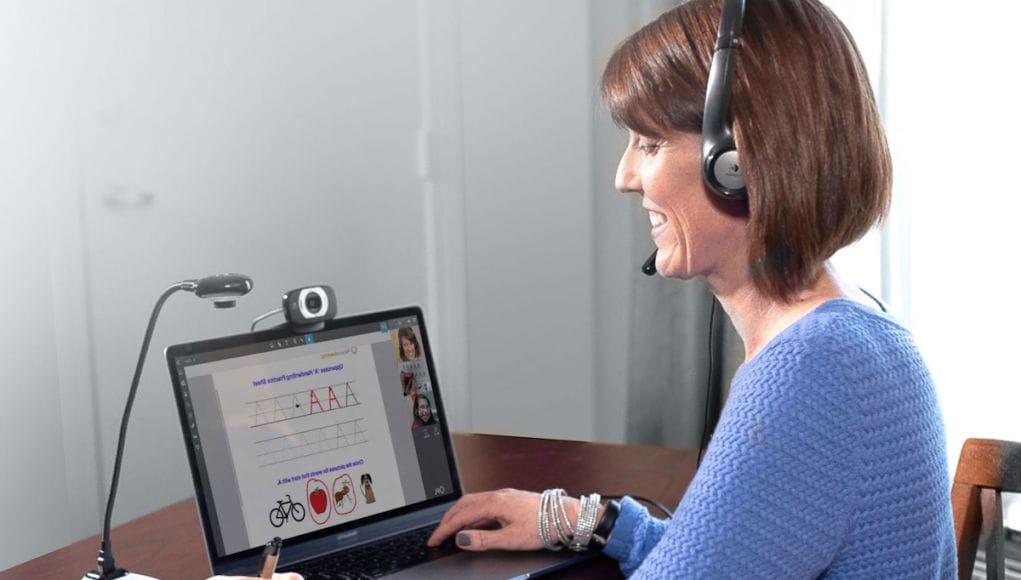
This article was originally published in Getting Smart.
Months after the pandemic brought life as we knew it to a halt, people started moving again. Literally. Over 15.9 million people have moved during the COVID-19 pandemic, and many of these movers were educators. With ongoing remote work, commutes disappeared, working from home became comfortable, and location became irrelevant.
What happens next year if staff have moved away, or simply don’t want to go back to commuting five days a week? Some communities may benefit, but others will be faced with significant shortages. And that’s adding to the places that grappled with this before the pandemic. Nowhere is this issue more acute than among special education providers. As the number of students with special needs continues to grow, so does the need for more speech-language pathologists (SLPs) and other clinical staff. In a survey of school-based SLPs conducted prior to the pandemic, more than half reported staff shortages in their districts.
Corporate employers learned long before COVID-19 that one way to attract and retain talent is to offer the flexibility to work from home. Employees report multiple benefits from remote working, including the flexible schedule, ability to work from anywhere, not having to commute, and spending more time with family. Gallup reports that “nearly two-thirds of U.S. workers who have been working remotely during the pandemic would like to continue to do so.”
To remain attractive as employers, school districts need to consider remote work solutions. While some roles do not lend themselves to remote work, many special education therapy services can be, and already are, delivered remotely. The schools that embrace this approach are likely to be the ones that win the battle for employee retention.
The View from Teletherapy
In March 2020, PresenceLearning, which provides teletherapy services to K-12 schools, saw applications from clinicians seeking online therapy work skyrocket, going from a few hundred per month to thousands of applications flowing in as schools across the country began to close. These applications were coming from people who had, until now, done their work inside school buildings, providing essential speech-language therapy, occupational therapy, and counseling services to students in special education programs.
As the spring progressed, districts found ways to get their own staff working through teletherapy. They hired PresenceLearning to provide “Therapy Essentials” packages, a combination of professional development on how to adapt their staff’s practice from in-room to online, and use of the teletherapy platform for school-based staff to engage with students with special needs in an online environment.
Over the course of summer 2020, the company provided training to thousands of school-based clinicians. At first, there was resistance to changing the way they had been doing things for so long. But the months went on, and the mindset shifted from frustration to tolerance and ultimately, to embrace it. Twelve months into the pandemic, the way of working with students with special needs has radically changed. It’s starting to feel like much of it will be permanent.
“Since grad school, I worked inside a school building,” one SLP shared. “But now I can’t see ever going back. I have an 18-month-old at home, and I get to see her between sessions. How could I go back?”
The View From a Special Education Department
The Central Kansas Cooperative in Education (CKCIE) (CKCIE) is responsible for special education services for 12 school districts in Kansas. The organization serves a school population of more than 14,200 in preschool through grade 12, providing special education services to nearly 3,000 exceptional students.
Before the pandemic, CKCIE already struggled to find and hire speech therapists, so they used teletherapy to serve a portion of the speech therapy caseload. They had 17 SLPs working in person and an additional nine SLPs working via teletherapy, providing online services to some 450 students who otherwise would not receive therapy.
On top of that, the staff grappled with “windshield time”: time spent driving from site to site. With the region covering more than 4,000 square miles, this was not insignificant. In addition to the lost time during the workday, there was also the very tangible cost of mileage reimbursement.
In March 2020, with the challenges of COVID-19 and schools moving to remote learning, CKCIE began using the PresenceLearning teletherapy platform for all of its own staff as well to continue serving students while schools were closed. In doing so, there was a light-bulb moment: maybe they didn’t have to go back to fully in-person when this was all over.
As the challenges of the pandemic continued in fall 2020, the use of the teletherapy platform continued within the speech-language department. Schools cycled in and out of remote, hybrid, and on-site learning based on the medical needs in each community and within the 56 school buildings served. The speech therapists were able to adapt, using the platform to provide therapy without interruption.
The special education cooperative had always faced another retention challenge: staff leaving the rural area to work in the metropolitan parts of the state. It was not uncommon to have an SLP work a few years and then move to a larger city. But with the use of the teletherapy platform, a new solution presented itself: If someone moved away, instead of losing them, they could be converted to a remote employee. Now CKCIE can maintain its own staff with more stability knowing that even if someone moves, they have a chance to retain them.
It struck then that this could be a permanent employment strategy. Why limit hiring to only those who live locally? And why continue to lose hours of productivity to drive time? In the future, a blend of online and in-person services can and will be a tremendous asset to organizations that struggle to fill special education positions.
Kate Eberle Walker is CEO of PresenceLearning and author of The Good Boss: 9 Ways Every Manager Can Support Women at Work. Mike Lowers is Executive Director of the Central Kansas Cooperative in Education.



